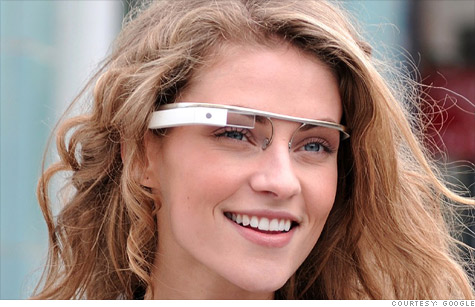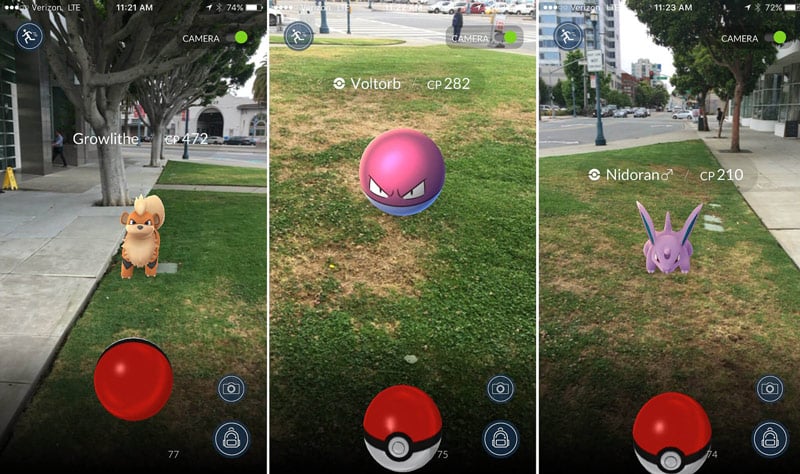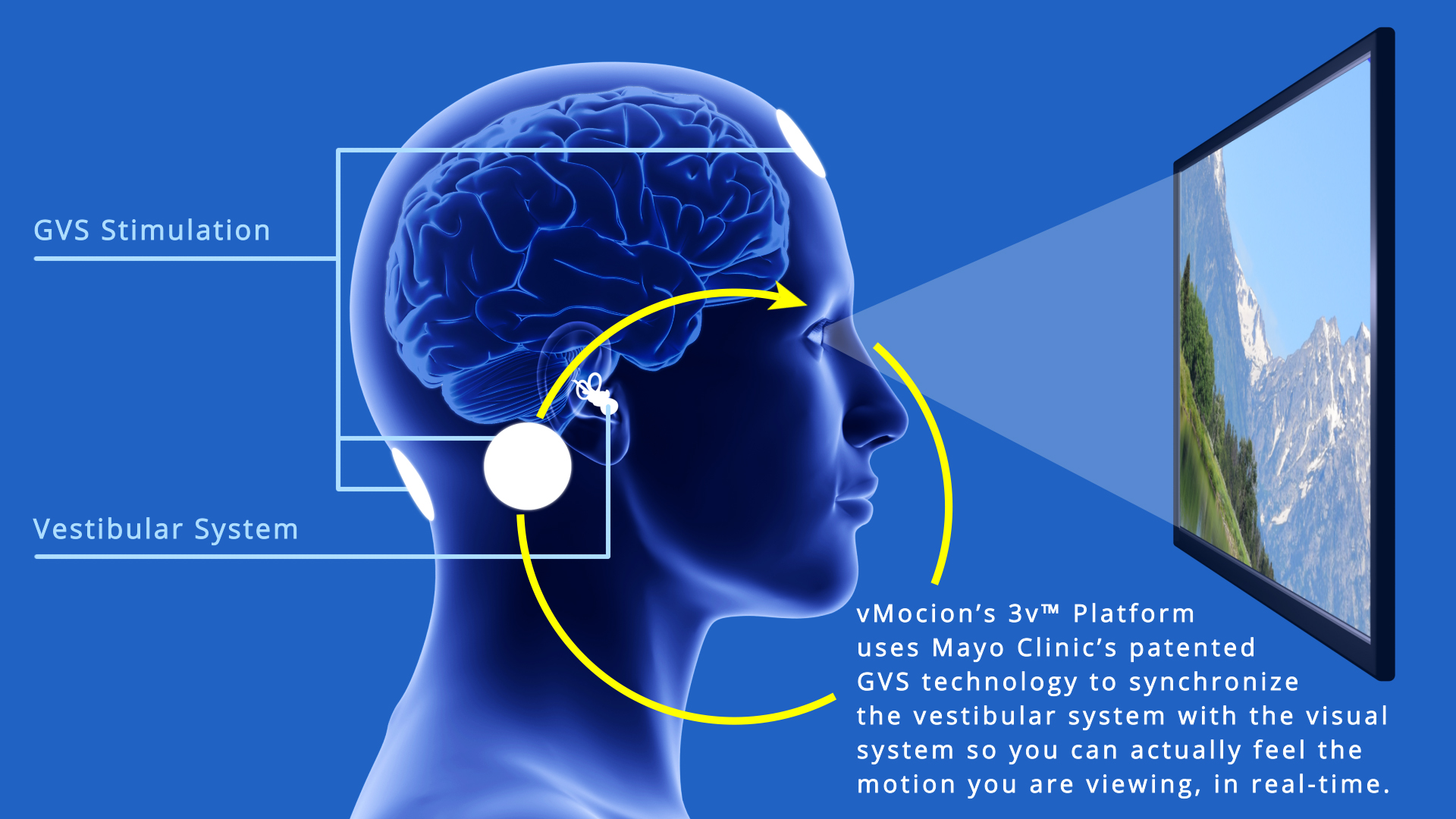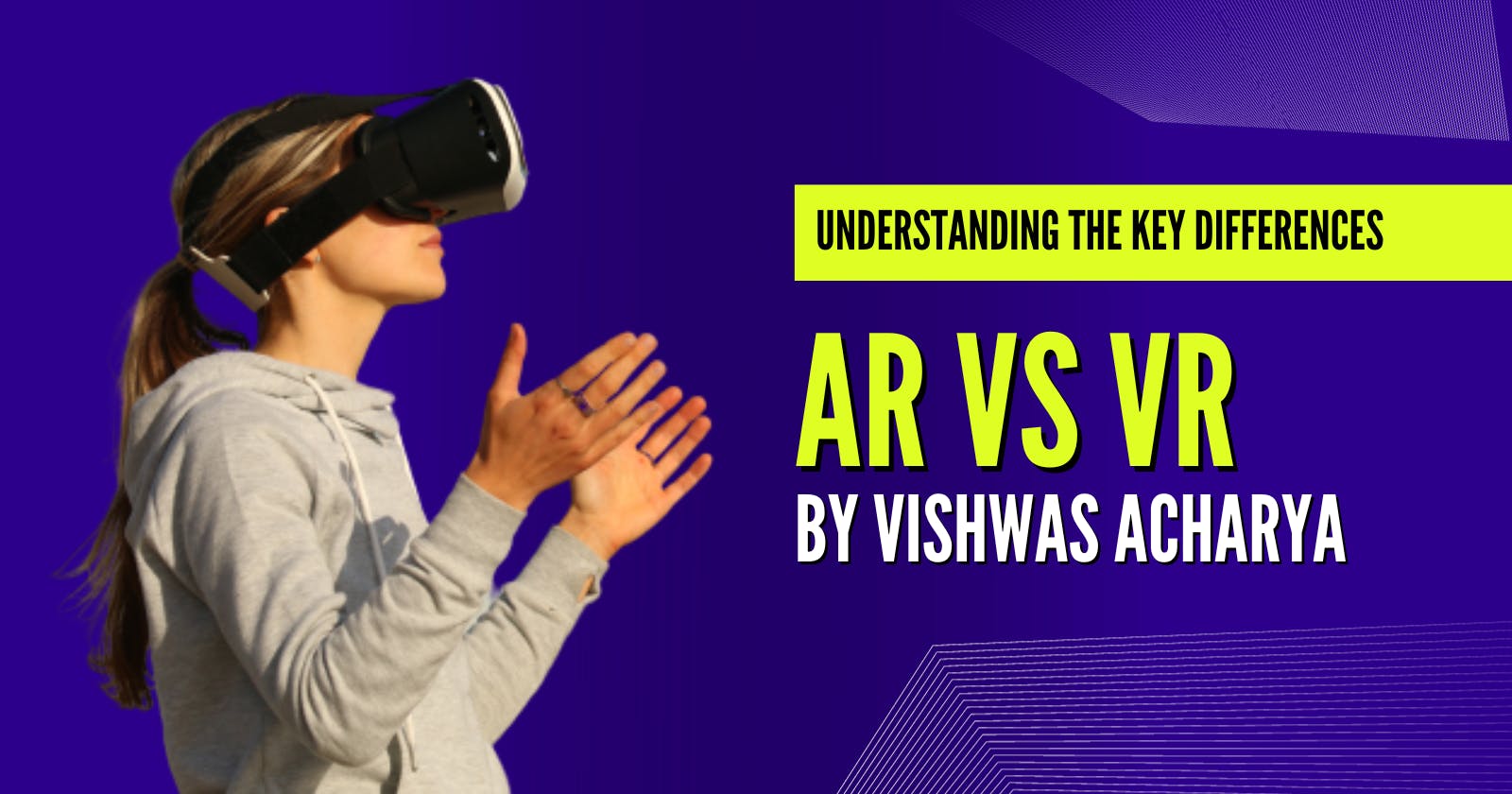Table of contents
- Introduction
- Technology Behind AR and VR
- AR vs. VR: The Basics
- Key Differences
- Applications of AR
- Applications of VR
- AR vs. VR in Entertainment
- AR vs. VR in Education
- AR vs. VR in Healthcare
- AR vs. VR in Business
- Advantages of AR and VR
- Limitations and Challenges
- Future Trends
- Conclusion
- FAQs (Frequently Asked Questions)
Introduction
In the realm of technology, two terms that often grab our attention are "AR" and "VR." Augmented Reality (AR) and Virtual Reality (VR) have become buzzwords in recent years, revolutionizing various industries and the way we interact with the digital world. Understanding the key differences between these two immersive technologies is crucial. In this article, we'll dive into the fascinating world of AR and VR, exploring their technology, applications, advantages, and limitations.
Technology Behind AR and VR
To grasp the disparities between AR and VR, it's essential to comprehend the technology that powers them.
How AR Works
Augmented Reality overlays digital content onto the real world. It typically utilizes a smartphone's camera, glasses, or a head-mounted display to superimpose virtual elements into your environment.
How VR Works
Virtual Reality, on the other hand, immerses you entirely in a computer-generated, three-dimensional environment. This is achieved through a VR headset, which tracks your head and body movements, creating a seamless digital world.
AR vs. VR: The Basics
Let's start by exploring the fundamental characteristics of AR and VR.
Augmented Reality (AR)
Real-world integration: AR enhances your real-world environment by adding digital elements to it.
Applications: AR is commonly used in navigation apps, gaming, and interactive marketing.
Real-World Example: Pokémon Go (Google Play, App Store)
Virtual Reality (VR)
Immersive experience: VR completely transports you to a digital world, making you feel as if you're truly present within it.
Applications: VR is extensively used in gaming, simulations, and immersive training.
Real-World Example: Oculus Rift
Key Differences
Now, let's delve into the core differences that set AR and VR apart.
Interaction with the Environment
AR: In AR, you interact with both the real world and digital elements simultaneously.
VR: In VR, you are entirely immersed in a digital environment, isolating you from the real world.
Level of Immersion
AR: AR offers a partial immersion, enhancing your real-world experiences with virtual elements.
VR: VR provides a full immersion, creating an entirely new digital reality.
Hardware and Software Requirements
- AR: AR usually requires devices like smartphones, tablets, or AR glasses (Google Glass), with less demanding hardware.

- VR: VR necessitates specialized headsets and powerful computers to create and sustain the immersive experience.

Use Cases and Industries
AR: Commonly used in industries like gaming, healthcare, education, and retail for enhancing real-world experiences.
VR: Thrives in gaming, simulations, and immersive training, essentially creating new digital worlds.
Advantages and Limitations
AR: Offers the advantage of blending digital with real, but it may suffer from limited immersion.
VR: Provides unparalleled immersion but can be isolating and demands high-end hardware.
Applications of AR
AR has found its place in various industries, enhancing real-world experiences.
Gaming
AR gaming apps like Pokémon Go have taken the world by storm, merging the digital and physical worlds.

Healthcare
Medical professionals use AR for surgeries, diagnostics, and patient care, augmenting their expertise.
Education
AR-based educational apps bring textbooks to life, making learning interactive and engaging.
Retail
AR enhances shopping experiences by allowing customers to visualize products in their real environment before purchase.
Manufacturing
AR is used in assembly and maintenance tasks, providing workers with real-time information and guidance.
Applications of VR
VR has carved a niche in several domains, primarily by immersing users in entirely new digital environments.
Gaming and Entertainment
VR gaming and virtual experiences redefine entertainment by taking users to otherworldly realms.
Training and Simulation
Industries like aviation, military, and healthcare use VR for realistic training and simulations.
Healthcare
In the medical field, VR assists in therapy, pain management, and rehabilitation.

Real Estate
VR enables virtual property tours, allowing potential buyers to explore properties without being physically present.
Architecture and Design
Architects and designers use VR to create and present immersive 3D models of their projects.
AR vs. VR in Entertainment
Entertainment is a field where both AR and VR thrive, but they do so in different ways.
Gaming
AR gaming is more about enhancing real-world experiences, while VR gaming immerses players in entirely new digital worlds.
Movies and Media
VR provides a cinematic experience where users can be a part of the story, while AR enhances the real world with digital content.
AR vs. VR in Education
The educational sector benefits greatly from both AR and VR.
Immersive Learning
AR and VR make learning more engaging by creating interactive and immersive educational content.
Virtual Classrooms
Virtual classrooms and remote learning have become a reality, especially with the COVID-19 pandemic, with both AR and VR playing significant roles.

AR vs. VR in Healthcare
The healthcare industry has seen remarkable transformations due to these technologies.
Medical Training
AR and VR are used in medical training, allowing practitioners to practice surgeries and procedures.
Patient Care
VR is used for pain management and distraction therapy, improving the patient experience.
AR vs. VR in Business
Businesses are leveraging AR and VR to gain a competitive edge.
Product Visualization
AR is used for product visualization, allowing customers to see how products fit into their real lives.
Remote Collaboration
VR facilitates remote collaboration by creating virtual meeting spaces and immersive teleconferencing.
Advantages of AR and VR
Both AR and VR bring unique advantages to the table.
Enhanced Experiences
AR enhances real-world experiences, while VR provides unparalleled immersion and escapism.
Training and Simulation
VR is ideal for realistic training scenarios, and AR assists professionals in real-world tasks.
Problem-Solving
Both technologies are used in problem-solving, from diagnosing medical conditions to resolving complex engineering challenges.
Limitations and Challenges
It's important to be aware of the challenges associated with AR and VR.
Cost
High-quality AR and VR equipment can be costly, limiting widespread adoption.

Motion Sickness
VR experiences may induce motion sickness in some users due to the disconnection between the virtual and physical worlds.

Privacy Concerns
Both technologies raise privacy concerns, as they involve data collection and the blending of digital and real worlds.
Future Trends
The future holds exciting prospects for AR and VR technology.
Advances in AR Technology
AR will likely become more integrated with our daily lives, with improved hardware and a wider range of applications.
VR and AR Integration
We may see a convergence of AR and VR technologies, offering hybrid experiences that blend the best of both worlds.
Conclusion
In conclusion, AR and VR are two groundbreaking technologies that have transformed various industries. While AR enhances the real world with digital elements, VR immerses users in entirely new digital environments. Each has its unique advantages and limitations, and their future looks promising with advancing technology and broader adoption.
FAQs (Frequently Asked Questions)
Q: What is the main difference between AR and VR?
A: The main difference is that AR enhances the real world with digital elements, while VR immerses users in entirely new digital environments.
Q: Can AR and VR be used together in one application?
A: Yes, some applications combine AR and VR elements for a mixed-reality experience.
Q: Are there any health concerns associated with VR?
A: Some users may experience motion sickness or discomfort when using VR for extended periods.
Q: How are AR and VR impacting the business world?
A: Businesses are using AR for product visualization and VR for remote collaboration, enhancing customer engagement and improving teamwork.
Q: What does the future hold for AR and VR technology?
A: The future promises more integration of AR in our daily lives and potential convergence of AR and VR technologies for hybrid experiences.
By Vishwas Acharya 😉
Checkout my other content as well:
YouTube:
Podcast:
